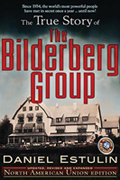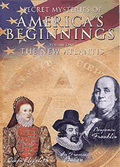APOCALYPTIC
ANGST
PART 1
By
Debra Rae
July 24, 2010
NewsWithViews.com
Part 1: Man’s Religious Constructions
The Book of Common Prayer reminds us that “there was never anything by the wit of man so well devised, or so sure established, which in continuance of time hath not been corrupted.”
This applies especially to man’s religious constructions, which blend reality with fanciful imaginations; truth with error. Last days speculation provides prime examples. For thousands of years, various cultures worldwide have contemplated earth’s looming end, the last judgment, and the hereafter.
Sources from which adherents draw their beliefs include the Mayan Code (Mesoamerican Long Count Calendar), the Qu’ran, the Zoroastrian Avesta, and prophetic passages from Old- and New- Testaments (e.g., Daniel, Revelation).
Mythological and Historical Eschatology
The term “eschatology” comes from Greek words meaning “last” and “the study of.” It references last days—specifically, the “close of the age” with respect to an historical period. Depending on its orientation, eschatology can be mythological or historical in nature.
In its grand cycles of the destruction and recreation of the universe, Hinduism advances mythological eschatology. Accordingly, Eastern mystics anticipate a new dawn once mankind takes a global leap to cosmic- or Christ- consciousness. In contrast, the three preeminent monotheistic world religions (Judaism, Christianity, and Islam) view the last days historically in terms of God’s perfecting His creation and establishing His kingdom.
In the end, monotheistic religions look to janah (paradise for Muslims), gan’eden (heavenly abode for Jews), or the New Jerusalem, new heavens and new earth for Christians. Although most eschatological traditions agree on general time frame, key figures, and desired outcome, key doctrines vary significantly.
That said, the “moon god” (Allah) diverges dramatically from the God of the Bible, as do particulars of Islamic eschatology. For most faiths, judgment scenarios inspire awe, if not fear; yet, while a Muslim martyr expects to be greeted by a gaggle of virgins, a Christian, once “absent from body,” is “present with the Lord.”[1]
End Time Imminence: Eastern Perspective
Albert Schweitzer once postulated: “As we acquire more knowledge, things do not become more comprehensible, but more mysterious.” Indeed, mystery shrouds Eastern eschatology. Core beliefs resurrect ancient Mithraic Mysteries (Zoroastrianism) and those of Osiris, Semiramis, and Eleusis from Egypt, Babylon, Greece and Rome, respectively.[2]
Ancient societies believed that in 2012 “the gods”—e.g., the feathered serpent god—would return to earth, judge its inhabitants, and usher in a new, pagan golden age. Starting at the Mayan Fifth Great Cycle, the Hindu calendar likewise predicts global earth changes around the year 2012.
21 December 2012 (or 13 Baktun) closes the 5,126-year, post-creation era in the Mayan Long Count Calendar. Similarly, "Cherokee Rattlesnake Prophecies" anticipate coming of the Pale One in 2012, when the Cherokee calendar ends.
Prophecies surrounding 2012 and the coming of Hiram appear repeatedly in Masonic literature, and the Jewish Kabala offers mystical commentary on the Pentateuch/Torah and sets 2012 as the date for Messiah’s appearing. St. Malachy fingers 2012 as relating to “the last Pope.”[3]
In contrast, the Bible offers no definitive date for end-of-time wrap up; however, by discerning signs, as indicated by changing seasons—e.g., spring blooms, blistering sunshine, falling leaves, the first frost—a Bible believer likewise heeds natural, spiritual, and social signs that signal Messiah’s coming.[4]
End Time Imminence: Western Perspective
Typical Westerners may pooh-pooh doomsday mania, but few dismiss socio-spiritual impact of last-day markers. Even agnostics take note when learning that the Web Bot Project for making stock market predictions foretells global devastation for late December 2012; and a NASA report of the National Center for Atmospheric Research anticipates an apocalyptic geomagnetic solar storm to reach maximum in the year 2012.[5]
Recall some years back, as Y2K fast approached. Many reliable sources warned that the much-publicized “millennium bug” threatened a worldwide economic depression. The scare featured embedded chips, billions of which are in service globally. “Unseen guardians of our lives,” these chips keep nuclear cores, intensive care units, military hardware, satellites, oil, gas, water, and electricity. For good reason, apocalyptic speculation abounded.
Should but one mission-critical failure occur, operations could halt altogether for agriculture, food processing, health care, education, air traffic control, and government services. Hollywood’s new batch of disaster films are likely triggered by “topical anxieties” relating to looming catastrophe (real, imagined, or manipulated), global unrest and violence, threat of financial ruin and deadly pandemics.[6] When presented in tandem, scenarios as these prompt many otherwise rational Westerners to seek escape in alcohol, gluttony, and fantasy entertainment.
Fear: The Hook
Even as Mayans prophesied some agent of destruction bringing famine, drought, volcanic eruptions, earthquakes, massive tidal waves, and polar reversal, Eastern mystics expect a cosmological “Dark Star” to cause deadly comets to bombard the earth. For Muslims, “major” and “minor” end-time signs include increased warfare and decreased godliness.
Among ten signs from the Sanhedrin 97B include Jews opposing Jews, heightened inflation, and youth hating the aged. Similarly, Christian eschatology features what the Bible describes as the beginning of birth pangs (some of which are listed above); full-force birth pangs involve persecution, rampant deception, and celestial disturbances of unprecedented magnitude.[7]
While Allah’s judgment is arbitrary, offering no substantive assurances to Muslims, the God of the Bible tempers justice with mercy; salvation of His devotees is secure.[8]
Key Figures
Most all religions recognize need for a savior. The role of each is similar—that being to overcome evil and establish good. Enemies of a promised golden age include un-awakened consciousness, Iblis (Muslim word for Satan), and antichrist.
Muslims believe a great destruction will precede the day of the resurrection (Yaum al-Qiyamah)[9] when Jesus (Isa) will return, restore faith, usher in a perfect Islamic society, and institute Sharia law to govern all aspects of life on the planet.
In the Mayan tradition, shamans serve as messengers between the natural and spiritual worlds. Alleged reversal of earth’s magnetic field will accompany the Mayan Fifth Cycle. Distinguished by rediscovery of ancient wisdom, this cosmic cycle will transition the age of degeneration (Kali) to that of a golden age (Krita).
Eastern mystics look for a new avatar (incarnation) of Maitreya Buddha—in Zoroastrianism, it’s Saoshyant. While Judaism awaits the Messiah, Christians await the Messiah’s return. Even as the Jewish Messiah will defeat Gentile nations and restore the nation of Israel, Christians believe that Christ will come again to rescue Israel, defeat antichrist, judge the nations, and establish a messianic kingdom.[10]
Crucial to Christianity is the crucifixion, death, and resurrection of Jesus, for “there is no other name under heaven given among men whereby we must be saved.”[11] No shaman, adept, avatar, “pale one,” or Maitreya will suffice.
Desired Outcome
Mayan wisdom recognizes seven ages of man in his journey from realizing his spiritual destiny, acknowledging the god within, and becoming spiritual to the point of exercising telepathy. By definition, nirvana is achieving enlightenment by absorption of the finite self into the infinite absolute. Through multiple, upward mobility reincarnations, mystics hope for nirvana in a “Pure Land Buddhism.”
| Subscribe to the NewsWithViews Daily News Alerts! |
Even as Muslims define seven levels of reward with emphasis on mutahsibir (sensual pleasure), Jews expect three levels of reward featuring restoration and fulfillment of God’s promises to Israel.
Christians are afforded degrees (not levels) of reward, first, in a millennial kingdom, then in a new heaven and new earth. Even as the brightness of the sun varies from that of the moon and stars, so it is with those bought back to right standing with the Father by the shed blood of Jesus and resurrection power.
Simply put: The closer to the Son, the brighter the reflected light.[12]
Next Saturday, Part 2.
Footnotes:
1,
2 Corinthians 5:8.
2,
Debra Rae, ABCs of Globalism: A Vigilant Christian’s Glossary
(Lafayette, Louisiana: Huntington House Publishers, 1999), 50-58.
3,
http://en.wikipedia.org/wiki/Baktun and http://en.wikipedia.org/wiki/2012_phenomenon.
4,
Matthew 24:36.
5,
http://www.december212012.com/topical
anx.
6,
Romans 8:22.
7,
Romans 8:30-31.
8,
Jerry Rassamni, From Jihad to Jesus: An Ex-Militant’s Journey
of Faith (Chattanooga, Tennessee: Living Ink Books), 216.
9- Ezekiel 39:22; Hosea 6:1-3; Zechariah 14:9; Matthew
25:31; Revelation 20:2-7.

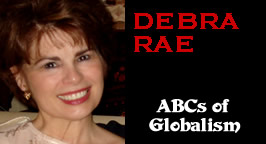
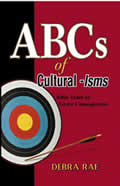
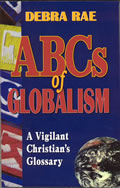


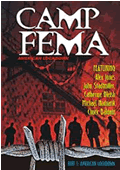





 Share This Article
Share This Article

